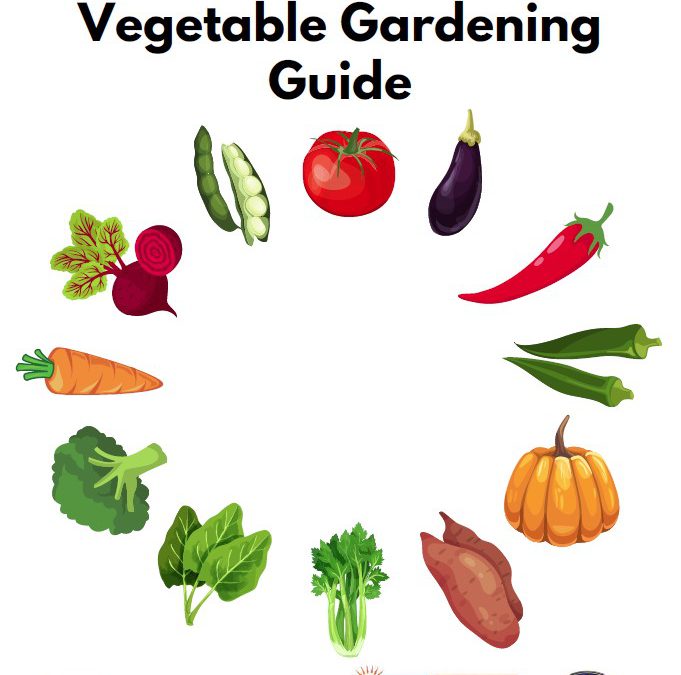
by Molly Jameson | Oct 28, 2021
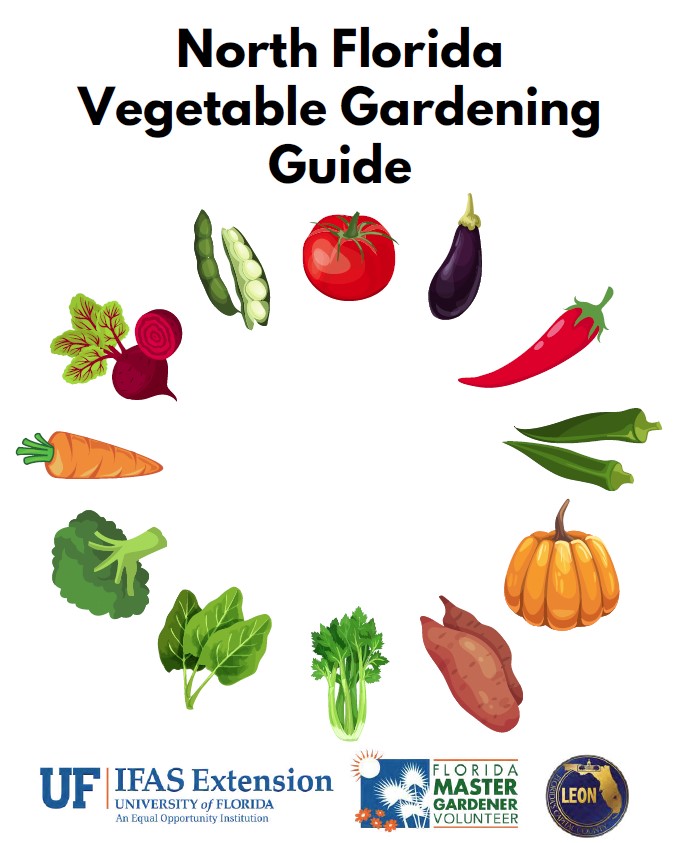
As you garden this fall, check out the North Florida Vegetable Gardening Guide, compiled by UF/IFAS Leon County Extension.
Getting into vegetable gardening, but don’t know where to start?
Even experienced gardeners know there’s always more to learn. To help both beginners and advanced gardeners find answers to their questions, the UF/IFAS Leon County Extension Office put together the North Florida Vegetable Gardening Guide. It incorporates multiple resources, including articles, planting calendars, photos, and UF/IFAS EDIS publications.
The North Florida Vegetable Gardening Guide covers the many aspects of vegetable gardening, including how to get started, site selection, insects and biodiversity in the garden, soil testing, composting, cover crops in the garden, irrigation, and more.
You can click here to view the digital version of the guidebook. We also have physical copies of the guide available at the UF/IFAS Leon County Extension Office (615 Paul Russell Rd., Tallahassee, FL 32301).
Happy fall gardening!
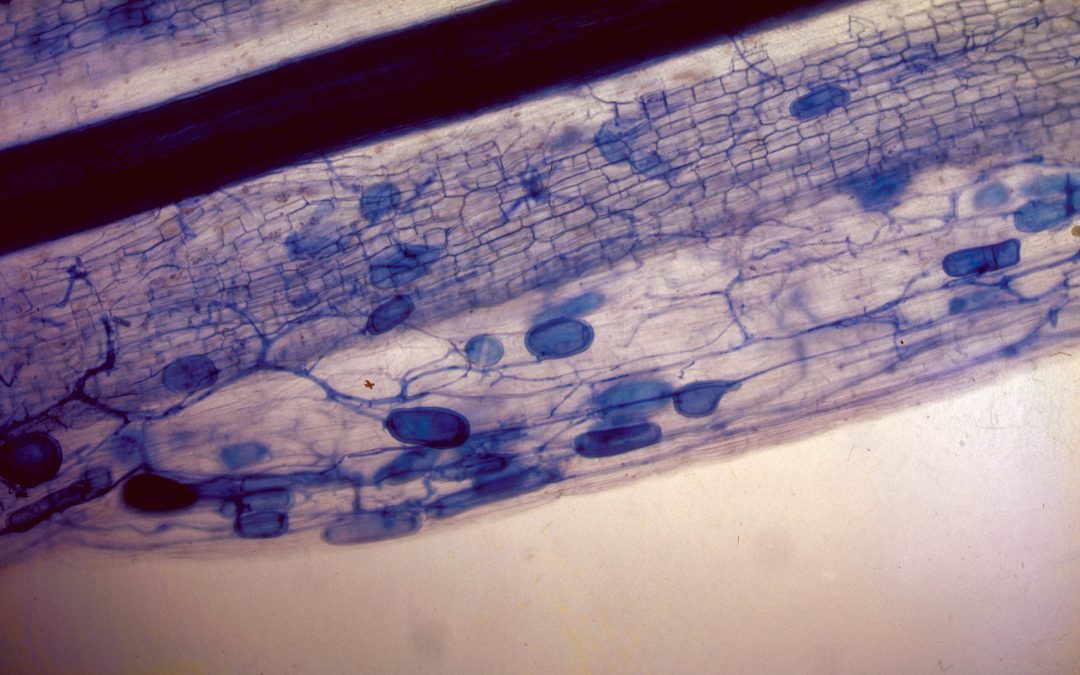
by Molly Jameson | Jun 3, 2021
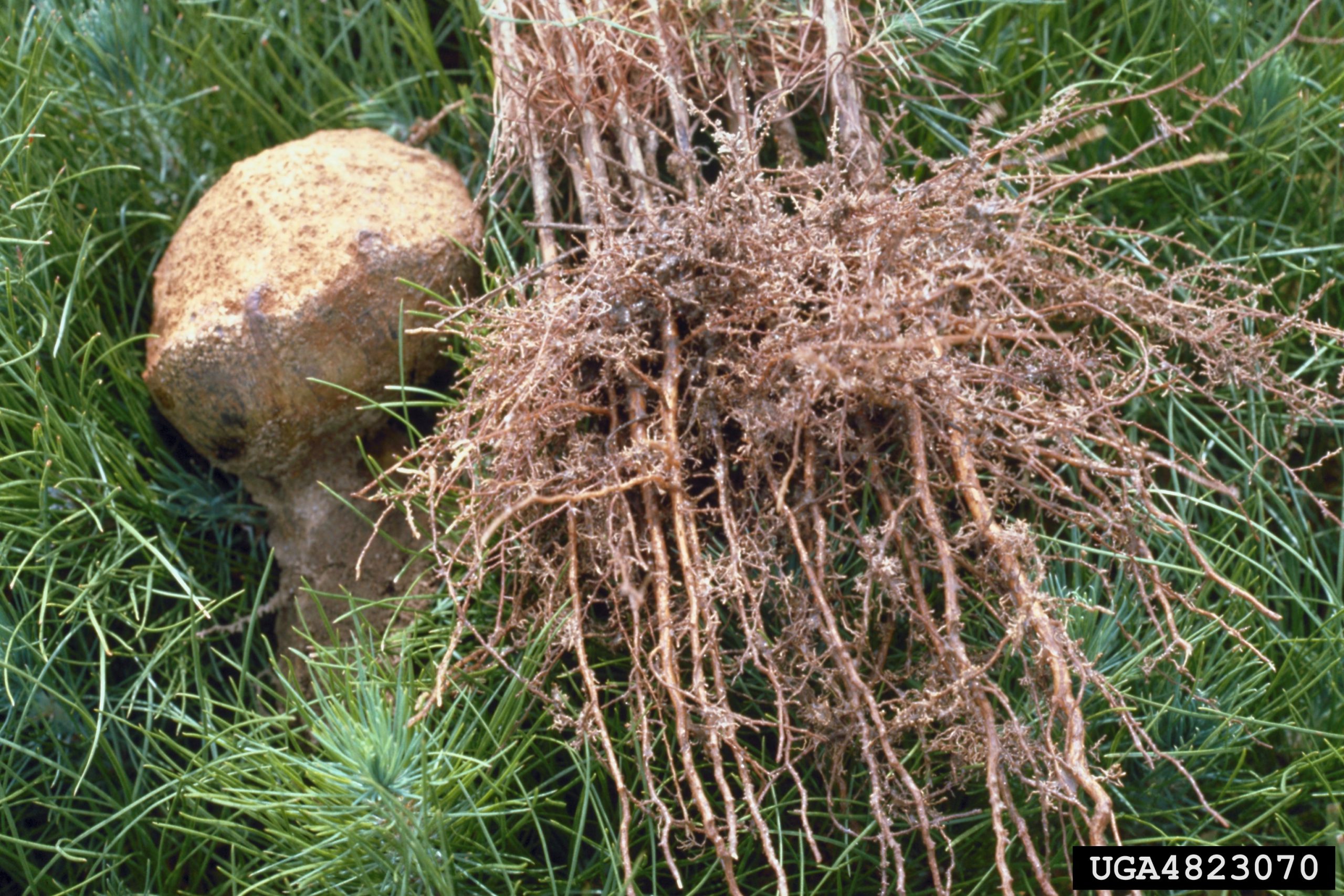
Mycorrhizal fungi develop mutually beneficial symbiotic relationships with plant roots. Photo by Edward L. Barnard, Florida Department of Agriculture and Consumer Services, Bugwood.org.
If you have taken an elementary school science class, you have probably learned the basics of photosynthesis. In case you are a bit rusty, photosynthesis is the process by which plants capture sunlight to manufacture their food. They absorb carbon dioxide from the atmosphere and water from the soil. With these ingredients, they create carbohydrates, or sugars, that supply the energy to grow and develop.
As you can imagine, this energy is vital to the health of the plant. But fascinatingly, plants expel between 20 and 40 percent of these sugars from their roots into the surrounding area around the roots. The sugars that the plant releases, along with amino acids, organic acids, enzymes, and other substances, are called root exudates. The area just inside the root where the sugars are released, and the area just outside the root where the sugars end up, is called the rhizosphere.
But why would a plant waste this energy? This is because they derive benefits from the unique microbial population that inhabits the rhizosphere. Plant roots are limited by the amount of nutrients they can take up in the soil. By feeding microorganisms their sugars, they are essentially recruiting workers to help them scavenge for nutrients in areas that they cannot access on their own.
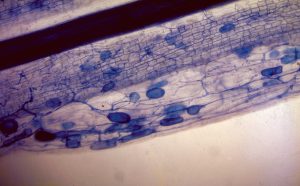
A microscopic image of mycorrhizal fungi in black walnut. Photo by Robert L. Anderson, USDA Forest Service, Bugwood.org.
Bacterial colonies, which are types of microorganisms, establish themselves within the rhizosphere and feed on the root exudates, allowing the bacteria to multiply. Along with the sugars they take in from the root exudates, they also take in nutrients from the soil. The waste that is produced by the bacteria is rich in bioavailable plant nutrients, which the plant then uses, creating a plant-microbe symbiotic relationship where everyone wins.
Another type of specialized microorganism, mycorrhizal fungi, also develops a symbiotic relationship with plants. Its meaning is within its name, as “myco” literally means fungus and “rhiza” literally means root. There are an estimated 50,000 fungal species that form these beneficial relationships with approximately 95 percent of plant families.
The mycorrhizal fungal hyphae, which are tiny fungal filaments one cell thick, do not have chlorophyll and are therefore not able to photosynthesize. Instead, the fungal networks have a large surface area that allows them to be particularly good at extracting nutrients from the soil. This enables them to access nutrients that plant roots would not be able to access on their own. The fungi drill into the plant root and trade these nutrients, along with water, with the plant in exchange for the sugary root exudates. In this way, both the fungi and the plant benefit from the relationship. Interestingly, these types of relationships will only develop once the plant releases particular root exudates that attract the microorganisms they are seeking. In essence, the mycorrhizal fungal hyphae will not associate with the root until they are invited.
Along with root exudates, root hairs and other plant cells accumulate within the rhizosphere as they grow and die throughout the plant’s life cycle. The combination of the root exudates, dead root hairs, and dead plant cells creates essentially a compost pile within the rhizosphere. This combination of substances establishes an environment where beneficial microorganisms can thrive, and a plant can maximize its nutrient uptake capacity.
Amazingly, there can be up to a billion bacteria and several yards of fungal hyphae living in just one teaspoon of soil! Of course, not all microorganisms are beneficial to the plant. But remarkably, plants have developed many ways in which they benefit, and ultimately thrive, in this diverse soil ecosystem.
As humans, we continue to learn more and more about these complicated and interesting interactions taking place in the soil beneath us. And the more we learn, the more we discover just how important these diverse ecosystems are to the health of the food web, and therefore, to the health of our planet as a whole.
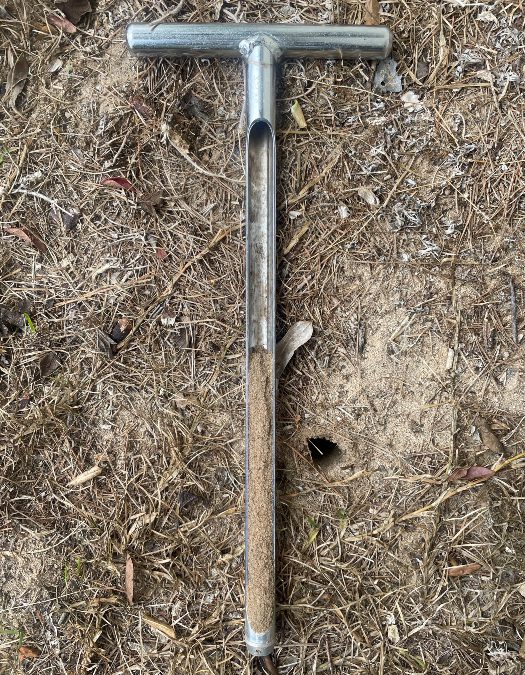
by Pat Williams | Jan 22, 2021
For all my years in the classroom, I never let students say the “d-word” when discussing soil science. In some instances, we had a “d-word” swear collection jar of a quarter when you used the term and even today, I hesitate from spelling the word out in text due to feedback from all those I have corrected. In case you still need a clue on the “d-word”, it ends in irt.
As a horticulturist for 46 years, I have read, heard, and been told many secrets to growing good plants. I still hold firm that without proper knowledge of how soil works, most of what we do is by chance. Soil is a living entity comprised of parent material (sand, silt, and clay), air, water, organic matter (OM), and microorganisms. It is this last item which makes our soils come to life. If you have pets, then you know they need shelter, warmth, air, water, and food. From this point forward think of soil microorganisms as the pets in your soil. If you take care of them, they will take care of your plants.
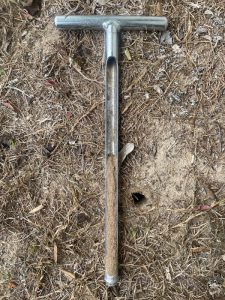
Sandy soil without any organic matter at the Wakulla County Extension office.
There is a huge difference in habitat from a sandy soil to a healthy soil with a good percentage of OM (5% – 10%). In one gram of healthy soil (the weight of one standard paper clip), you can have bacteria (100,000,000 to 1,000,000,000), actinomycetes (10,000,000 to 100,000,000), fungi (100,000 to 1,000,000), protozoa (10,000 to 100,000), algae (10,000 to 100,000), and nematodes (10 to 100) (1). A teaspoon of healthy soil can contain over four billion organisms (2). These microorganisms are part of the soil food web and they form a relationship between soil and your plants. They help convert nutrients to useable forms and assist with other plant functions.
The question becomes how to take care of your soil pets. For years we have performed practices that compromise these populations. Growing up we put all of our grass clippings in the weekly trash. We know now how valuable those clippings are and to leave them be. Two practices still common today though are tilling and raking leaves.
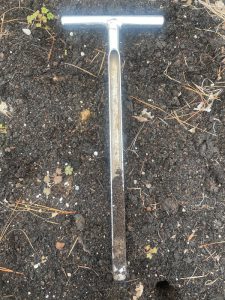
Master Gardener Volunteer vegetable bed with organic matter added.
Tilling has a limited purpose. If I place a layer of organic matter on top of the ground, then tilling incorporates the OM which feeds my pets. Excess tilling of soil introduces large amounts of oxygen which accelerates the breakdown of OM thus reducing our pet populations over time. Another adverse result from tilling is disturbing the soil structure (how the parent materials are arranged) which can reduce pore spaces thus limiting water percolation and root growth. There is a reason agriculture has adapted no-till practices.
Raking leaves (supposedly the sign of a well-kept yard) is removing large amounts of OM. Do you ever wonder why trees in a forest thrive? All of their leaves fall to the ground and are recycled by the microorganisms. Each of those leaves contains macronutrients (carbon, hydrogen, oxygen, nitrogen, phosphorus, potassium, calcium, sulfur, and magnesium) and micronutrients (boron, copper, chlorine, iron, manganese, molybdenum, nickel, and zinc) which are necessary for plant growth. You would be hard pressed to find all those nutrients in one fertilizer bag. So recycle (compost) your leaves versus having them removed from the property.
We are in our off season and tasks such as improving soil health should be considered now for soils to be ready in spring. Remember a little organic matter at a time and never work wet soils. As your OM levels build over the years, remember to change your watering and fertilizing schedules as the soil will be better adapted at holding water and nutrients. Soil tests are still recommended before fertilizing.
If you would like more tips on improving your soil, contact me or your local county horticulture extension agents. For a more in depth look at caring for your soils, read The Importance of Soil Health in Residential Landscapes by Sally Scalera MS, Dr. A.J. Reisinger and Dr. Mark Lusk (https://edis.ifas.ufl.edu/ss664).
- Chapter 2: Soils, Water, and Plant Nutrients. Texas Master Gardener Training Manual.
- The Importance of Soil Health in Residential Landscapes. 2019.








